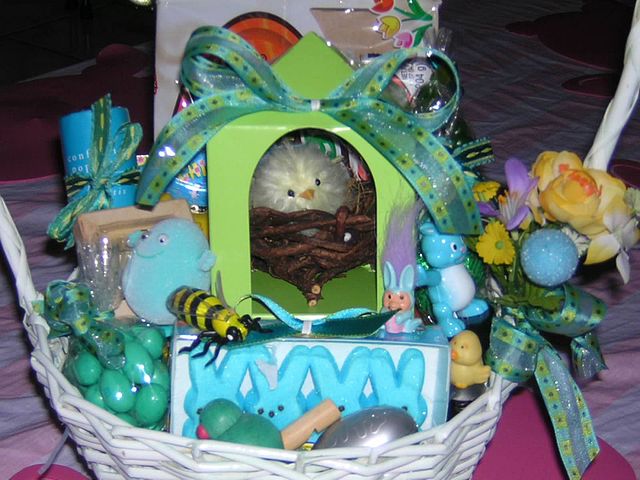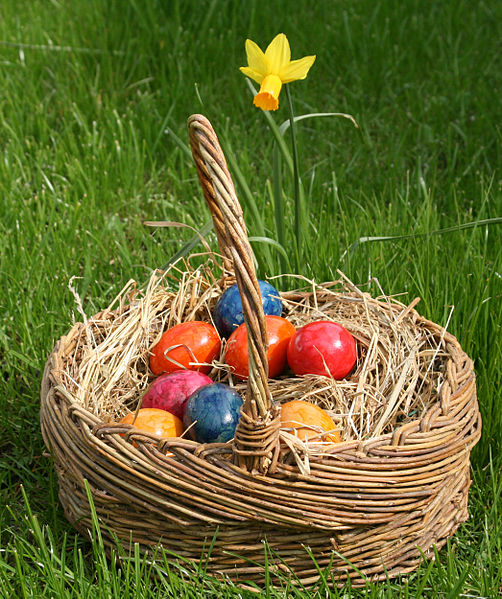Lifestyle
Easter: From Empty Tomb to Easter Eggs and Everything in Between
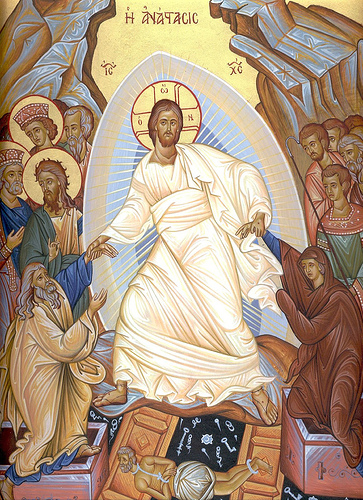
Eastern Orthodox icon depicting the Jesus Christ’s Harrowing of Hell or Descent into Hades after His deat and before His Resurrection. (Wikipedia photo)
Easter. A holiday most frequently – and rightfully so – associated with the Christian commemoration of Jesus Christ’s resurrection. It is a celebration of faith, hope and love; a recollection and honouring of the highest price paid for humanity, the passion and death of the Christ, and the empty tomb.
Yet oddly enough, it is also a celebration of spring, multi-colored Easter eggs, the (likewise odd-enough) Easter Bunny, leg of lamb and Easter ham dinners, and a cornucopia of yummy sweet treats (marshmallows, jellybeans, chocolate eggs and bunnies, to name a few of the most popular.)
So how did we get from empty tomb to the Easter bunny?
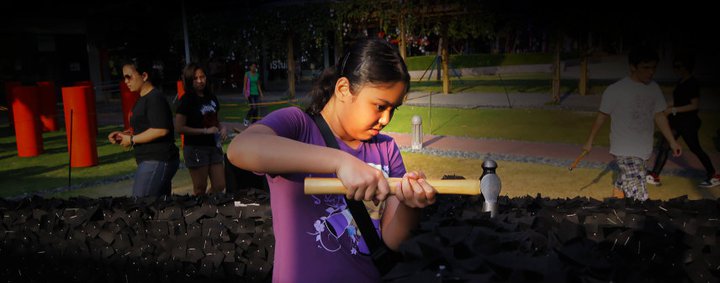

Nailing pieces of black cloth, representative of sin, is just one symbolic expression of faith in the Risen Lord’s sacrifice at this interactive and contemporary version of the Stations of the Cross. (Photo: Andrew Syyap / Church Without Walls)
Christian beliefs founded on Christ
Easter is perhaps the most revered and celebrated festival of the modern Christian church. The holiday celebrates Jesus Christ’s resurrection from the dead after three days in the tomb, marking the culmination of His passion and death. It is identified with the Passover (hence, today’s traditional Easter lamb dinner) and Exodus from Egypt, as recounted in the Old Testament, through the Last Supper Jesus celebrated with His disciples, and and His crucifixion and death before His resurrection. The New Testament tells us that Jesus gave the Passover meal a new meaning when He made Himself the ultimate Passover meal, symbolized by the Last Supper, and fulfilled by His passion and death.
Easter Sunday itself (and the Holy Week before it) is known as a moveable feast, in the sense that there is no fixed date for its celebration. It is, rather, determined on a lunisolar calendar, similar to the Hebrew calendar, and falls on the first Sunday following the full moon (also known as the Paschal Full Moon) after the March equinox. There are also differences in the way believers of Eastern and Western Christianity determine the date, with the former using the Gregorian calendar, and the latter, the Julian calendar.
Western Christianity comprises 80% of Christians across the globe, including the Roman Catholic Church and all denominations derived from it: Anglican Communion, Lutheranism, Presbyterianism, Methodism, Protestantism, Born-again Christianity, and offshoots thereof.
Most Western Christians celebrate an entire season leading up to Easter Sunday. This season is known as Lent, a 40-day period of fasting and penitence to commemorate the 40-days Jesus spent fasting in the desert. Lent, which begins on Ash Wednesday, is observed in preparation for Easter and lasts forty days (excluding Sundays). During lent, the devout pray, fast, and do penance to atone for their sins.
Strangely enough, in many cultures, this “holy season” is preceded by one big and excessive party; one “last hurrah”, if you will, before the fasting and penitence begin. The festivities take place on the Tuesday before Ash Wednesday, commonly known as Fat Tuesday, with the most popular (and notorious) celebrations being the Mardi Gras and Carnival in Rio de Janeiro.
The week before Easter is known as Holy Week, which begins with the Palm Sunday. The Wednesday before Easter is known as Spy Wednesday, while the last three days before Easter (also known as the Easter Triduum, Latin for “Three Days”) are Maundy Thursday, Good Friday and Holy Saturday (sometimes referred to as Silent or Black Saturday). During Holy Week, the faithful pray, fast, and – in many parts of the Christian world – reenact the Stations of the Cross, and Jesus’ passion and death.
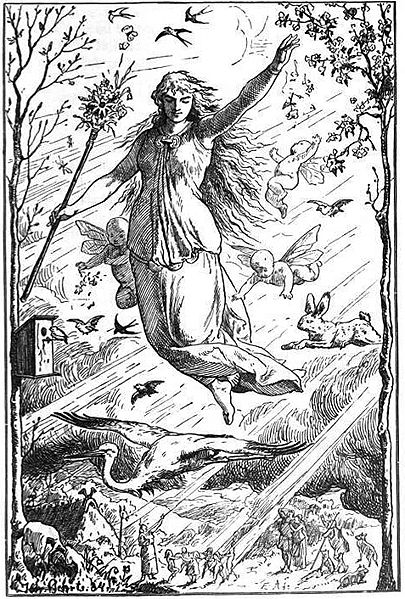

Ostara (1884) by Johannes Gehrts. The goddess Eostre flies through the heavens surrounded by Roman-inspired putti, beams of light, and animals. Germanic people look up at the goddess from the realm below.(Wikipedia photo)
Pagan roots and the goddess Eostre
Ironically enough – and, as you can imagine, hotly contested by the devout – historical accounts show that much of Easter as we know it is rooted in pagan traditions.
The celebration coincides with pagan rituals to mark the Vernal equinox, which falls on the 21st of March every year. This marked the end of the winter months, and the arrival of spring; the season closely associated with rebirth.
In ancient Teutonic mythology, spring was believed to come forth from the Eostre, the ancient Greek goddess of spring. It was a widely held belief in ancient Greece that every year, the goddess Eostre returned to Earth after a long, cold winter, bringing with her the much anticipated and awaited light and warmth of spring. To welcome, honour and thank Eostre – and to signal the start of spring – joyous pagan festivals were held across Greece.
As you have probably guessed, and by no far stretch of the imagination, the name “Easter” is said to have derived from “Eostre;” thus fueling the belief that the Christian festival was heavily influenced by pagan rites.
Some historians and scholars point out – even more ironically – that the very celebration meant to glorify Christ was influenced by pagan traditions, with the purpose of diminishing Christ’s power. How do I mean? It is noted by scholars that the leaders of the early Christian church were intimidated by the strength of Christ’s followers; as such, did all they could to “water down” their faith and influence.
Those on the Christian side of the fence, however, say otherwise: that the Church changed the Pagan festival from a celebration of spring to a celebration of the resurrection of Jesus in order to wipe out pagan traditions.
Signs of spring, rebirth, and fertility
No matter on which side of the fence you find yourself, the Easter as we have come to know and celebrate bears the undeniable hallmarks of spring. Flowers and butterflies, birds and bees, brightly colored eggs and a basket bearing bunny (more accurately, a hare – but that would ruin my “b” alliteration): spring (and Easter) is most definitely in!
Ancient symbols of fertility – such as the egg – are also evident in Easter traditions, such as brightly-colored Easter eggs and frenetic egg hunts. Fertility is naturally tied in with rebirth, which is integral to Easter customs. Furthermore, the ancient Egyptians, Persians, Phoenicians, and Hindus all believed that the world began with an enormous egg; thus, the egg is also a symbol of new life.
It is unsure when and where the long-held favourite tradition of coloring the eggs started, but historical accounts show that this custom has been going on a long time. Early practices include people boiling eggs in water stewed with flowers (to herald spring), and the natural dyes from the flowers would tint the eggs. Also, some early Christians would dye the boiled eggs red; a remembrance of the blood and sacrifice of Jesus. Still some would colour them green, to reflect the new growth of leaves and foliage. In ancient Egypt, Greece, Rome and Persia, eggs were dyed the colours of spring for spring festivals; while in medieval Europe, beautifully decorated eggs were given as gifts (eventually evolving into highly-prized custom-made bejeweled gold eggs made by the House of Faberge.)
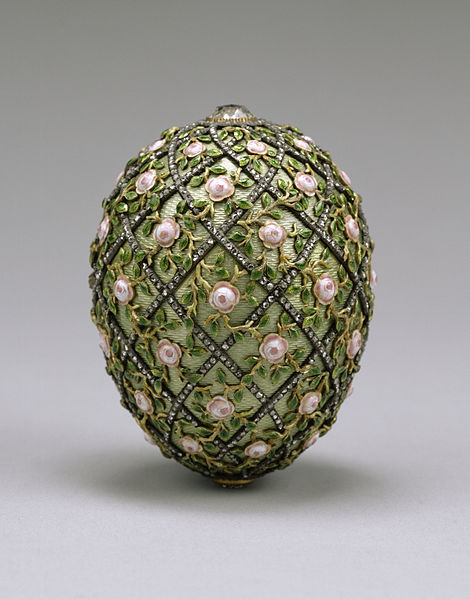

House of Faberge egg commissioned by Tsar Nicholas II to give to his wife, Alexandra Fedorovna in 1907. (Wikipedia photo)
The Easter Bunny – originally known as the Easter Hare – is yet another of Easter’s most identifiable characters and symbols. Peculiar, perhaps; but nonetheless part and parcel of the festivities. Rabbits and hares are notorious for their fertility, having frequent multiple births (we’ve all heard the idiom “breed or multiply like rabbits”), and are commonly representative of fertility.
The Bunny is to Easter what Santa is to Christmas. In many parts of the world today, on Easter Sunday morn, children wake up to find a basket filled with chocolate and candy “from the Easter Bunny.” They also find that eggs they had decorated all week long have mysteriously gone missing; playfully hidden around the house by the Bunny spirit, leaving all-too-willing children no choice but to hunt for them. Thus, the Easter Egg Hunt.
The egg hunt dates back to old world Europe, when children would go from house to house – much like they would on Halloween – asking for Easter eggs. This was called pace-egging. Neighbours eventually started hiding them in grassy areas around their houses, because (for some strange reason) children back then believed that rabbits “lay eggs in grass.” This general misinformation led to what has become one of Easter’s most fun activities (and perhaps, highly confused children.)
In other countries, Easter eggs are also symbolic of the stone rolled away to reveal Jesus’ empty tomb. Children play games of egg rolling to commemorate this.
As for other Easter favourites? Colours are sunny yellows, pastel pinks, verdant greens, and sky blues: the palette of spring! Easter flowers are – among a whole bunch of picks – usually White Lilies, symbolic of Jesus, and of His divinity and purity; Daisies, for purity and placidness; and Azaleas, which show temperance and passion. Popular Easter food includes hard boiled eggs (of course!), honey pastries, Hot Cross Buns, other cakes blessed by the Church, roast lamb (symbolic of the Passover Meal), and ham (in pioneer America, settlers cured the meat they could not consume in the fall, to be eaten in the spring.) And – thanks to the unavoidable spirit of commercialization – lots and lots of candy, marshmallows and egg or bunny-shaped chocolates (fun fact: over 90-million chocolate Easter bunnies are made every year)!
There you have it; everything Easter. Rebirth and new life are the common threads that run through the colourful, interesting, intriguing, Easter fabric. And these threads have endeared the tradition in the hearts of many; for who does not need an occasional dose of renewed hope?
We tip our flower bedecked, highly decorated hats to Easter!


